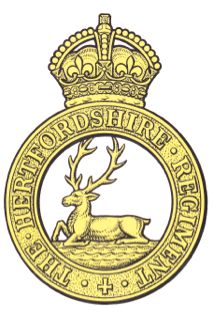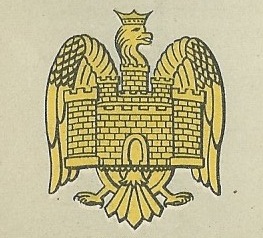
The Bedfordshire Yeomanry was a Yeomanry regiment of the British Army. Serving intermittently between 1797 and 1827, it was re-raised in 1901 for the Second Boer War. It participated in the First World War before being converted to an artillery regiment. It served in the Second World War. Its lineage was maintained by 201 Battery, 100th (Yeomanry) Regiment Royal Artillery until that unit was placed in suspended animation in 2014.
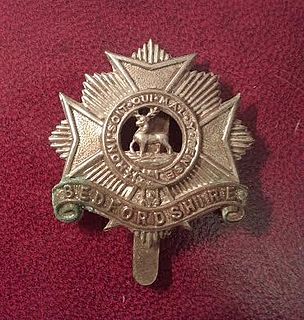
The Bedfordshire and Hertfordshire Regiment was the final title of a line infantry regiment of the British Army that was originally formed in 1688. After centuries of service in many small conflicts and wars, including both the First and Second World Wars, the regiment was amalgamated with the Essex Regiment in 1958 to form the 3rd East Anglian Regiment. However, this was short-lived and again was amalgamated, in 1964, with the 1st East Anglian Regiment and 2nd East Anglian Regiment, and the Royal Leicestershire Regiment to form the present Royal Anglian Regiment.

The Hertfordshire Yeomanry is a unit of the British Army specializing in artillery and yeomanry that can trace its formation to the late 18th century. First seeing service in the Second Boer War, it subsequently served in both the First World War and the Second World War. Its lineage was maintained by 201 Battery, 100th (Yeomanry) Regiment Royal Artillery until that unit was placed in suspended animation in 2014.

The East Midland Brigade was an infantry brigade of the Territorial Force, part of the British Army, that was raised in 1908. As the name suggests, it commanded infantry battalions recruited in the East Midlands of England: Bedfordshire, Northamptonshire, Cambridgeshire and Hertfordshire. The brigade was an integral part of the East Anglian Division.
The IV East Anglian Brigade of the Royal Field Artillery was a unit of Britain's Territorial Force (TF) from 1908 to 1919. It served in the Sinai and Palestine Campaign during World War I.
The Huntingdonshire Cyclist Battalion was a bicycle infantry battalion of the British Army. Formed in the Territorial Force in February 1914, it remained in the United Kingdom throughout the First World War. After the war, in 1920, it was converted to infantry and became the 5th (Huntingdonshire) Battalion, Northamptonshire Regiment in the Territorial Army. The battalion saw extensive service in the Second World War, fighting in France in 1940, Tunisia from 1942–43 and later Sicily and Italy from 1943–45 before ending the war in May 1945 in Austria. It continued to serve after the Second World War until May 1961 when it was amalgamated with the 4th Battalion, Northamptonshire Regiment to form the 4th/5th Battalion, Northamptonshire Regiment.

The St John's Hill drill hall is a military installation at Lavender Hill in London. The building on St John's Hill became the regimental headquarters for the London Regiment in 1993.

The Hunter Street drill hall is a military installation in Kirkcaldy, Scotland.

Londesborough Barracks is a military installation in Kingston upon Hull.
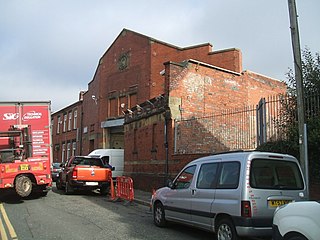
The Baron Street drill hall is a former military installation in Rochdale, England.
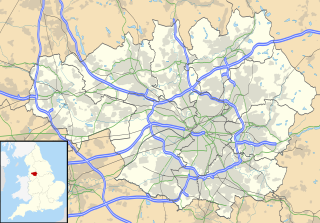
Stockport Armoury is a military installation in Stockport, Greater Manchester, England. It is a Grade II listed building.

The Canterbury Street drill hall is a former military installation in Blackburn, Lancashire. It is a Grade II listed building.

The Bank Parade drill hall, also known as the Keighley Green Drill Hall, is a former military installation in Burnley, Lancashire.
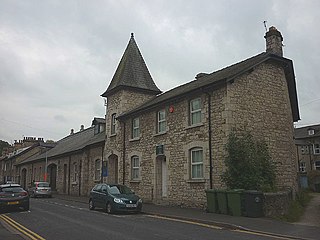
The Queen Katherine Street drill hall, sometimes known as the Aynam Road drill hall is former military installation located in Queen Katherine Street, off Aynam Road, in Kendal, Cumbria.

Castle Hill is a series of buildings used as council offices in Winchester, Hampshire. There are two main structures both of which are Grade II listed buildings: the Castle Hill Offices on the east of Castle Avenue and the Castle Avenue Offices on the west of Castle Avenue.

The Bath Street drill hall is a former military installation in Warrington, Cheshire.

The St Mary's Street drill hall is a former military installation in Huntingdon, Cambridgeshire.
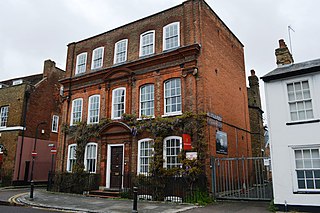
Yeomanry House is a former military headquarters in Hertford. It is a Grade II* listed building.

The Church Street drill hall is a military installation in Brighton. It is a Grade II listed building.





